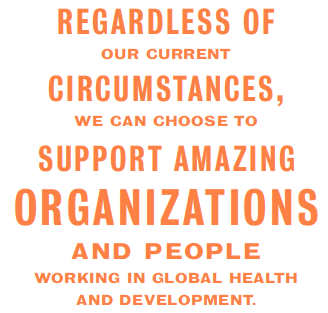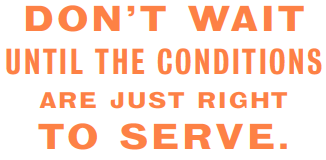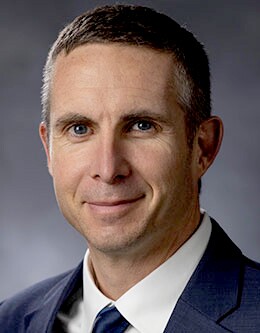A World Full of Rain Clouds

Several years ago, during an exceptionally tragic week in the news, my son heard a news agency report about earthquake drills taking place as part of the state’s preparedness efforts. Mistaking the news report for an announcement that an actual earthquake would occur in the coming days, he approached me one evening with tears in his eyes and said, “Dad, what about the earthquake?” The cumulative bad news, both real and perceived, made my six-year-old think the walls were crumbling and that it was the end of the world as he knew it.

More than ten years later, amid pandemics, wars, and natural disasters, it is easy to believe a similar narrative of doom and gloom. This can be especially true in a world increasingly viewed and understood through sound bites. Social media, the internet, and other platforms have the ability to intensify short messages—for better or worse. Over time, these doses of contemporary media grow like a snowball rolling downhill, having the propensity to make a narrative of gloom feel particularly heavy and burdensome. In the midst of of compounding negative media, one might easily be tempted to view the world like the weather in Seattle, always rainy.
However, I am thankful to report that despite our seemingly unprecedented local and global challenges, the gathering clouds are not our only forecast. There is, in fact, a very good chance of sunshine. This is not simply a glass-half-full perspective. Rather, recent history suggests the world is getting far better than most people realize.
The World Is Better than We Know
During my relatively short lifetime and through my work in global health and development, I have seen tremendous improvements across the globe that are impacting lives for the better. Even in some of the world’s most vulnerable locations, people are living longer and fuller lives. Let me give you a few examples of what some may find to be surprisingly hopeful trends.

Since 1990, the number of childhood deaths around the world has been cut by more than 60 percent, which means that nearly eight million more children are surviving each year compared to thirty years ago.1 That is roughly equivalent to saving the entire population of the state of Washington every year.
Similarly, maternal mortality (the death of mothers during pregnancy, delivery, or shortly after birth) has dropped by nearly half during the same time span, falling from more than 500,000 maternal deaths in 19902 to 287,000 deaths in 2020.3 Meaning, approximately a quarter of a million more women are surviving each year than would have thirty years ago. That is enough mothers to fill LaVell Edwards Stadium four times every year.

We have seen phenomenal progress in other areas as well. In 1966, some ten years before I was born, roughly half of the world lived on the equivalent of $2 per day in today’s currency.4 This is often referred to as extreme poverty. Today, less than one in ten people live in extreme poverty, a reduction of 80 percent over the past half century.5 The immense impact of global poverty alleviation cannot be overstated. As families and individuals have access to more resources, they can do more than just survive; they can thrive, contribute to their communities, and realize their potential.
These dramatic improvements did not happen spontaneously. Dedicated professionals, better governance and policy, focused efforts, technological advancements, and a number of other factors have combined to make the world far better than it was just a short time ago.
There Is Still Work Left to Do

While not meant to be exhaustive, these significant successes in global health, education, and poverty alleviation are inspiring. However, I would quickly acknowledge that the world is not all rainbows and unicorns. Nearly five million children still die each year before their fifth birthday,6 more than a quarter of a million women die during pregnancy or childbirth,7 and nearly 150 million children suffer from stunting.8 These health conditions, which are rare in high-income countries, should not happen in today’s world. These deaths hinder development and progress among the poorest populations in the world, where extreme poverty still impacts over 700 million people.9
So, yes, our lifetimes have been marked by monumental global health and development successes. At the same time, it is not a contradiction to say that disease, death, and poverty still plague too much of the world. My point today is to suggest that only focusing on the bad news overlooks the great leap forward that has happened in the past few decades. As the great Swedish epidemiologist Hans Rosling said so well, “Remember: things can be bad, and getting better.”10 Nephi made a similar point when he said he had seen many afflictions in his days but also lived after the manner of happiness.11 So, let us be hopeful because of our past success while recognizing there is work left to do.
What Is Our Part?
"I alone cannot change the world, but I can cast a stone across the waters to create many ripples."
While it is easy to say, “Just serve where you can!” many are unsure where to start. You might ask yourself, “How can I get involved?” or “How can I reach those in the most vulnerable situations in the world?” Mother Theresa said, “I alone cannot change the world, but I can cast a stone across the waters to create many ripples.” I propose five ways we can create consequential ripples across the waters of our local and global communities, like Mother Theresa’s stones.
1. Choose to Love

Loving others is the foundation of the gospel of Jesus Christ. Love is powerful when it starts locally and expands circle by circle, ripple by ripple, to all those we come across. Love is particularly powerful when it opens our eyes to see those living in the margins of our local and global societies, those who spend much of life unseen. The Savior’s teachings on love have always inspired me. He said, “Verily I say unto you, Inasmuch as ye have done it unto one of the least of these my brethren, ye have done it unto me.”12
For me, global health is a latter-day effort to love “the least of these.” I suspect we all have been impacted by acts of love that have lifted us during our most vulnerable times. Sometimes, even simple, genuine acts can profoundly influence our trajectories and remind us that beyond medicines and vaccines, the real gift we give others who are wading through difficult times is the gift of love. Through love we let them know that we see them, we value them, we are better because of them, and we are grateful to share part of their journey.

2. Choose to Understand

Good intentions are simply not enough. We need to go out and gain real understanding. In gaining additional insights, we follow the campus motto, “Enter to learn; go forth to serve.” While learning is not always a prerequisite to doing, expertise is important when working on life-and-death matters.
One can gain understanding in a variety of ways. For example, there are dozens and dozens of thoughtful books, podcasts, and talks on development and health that explore efforts to address the health of communities and nations. And we need not look at only one discipline for direction either. Thankfully, there are many disciplines working to make the world safer and healthier. While my field of public health is a common one involved in this work, I regularly work with sociologists, economists, and engineers just to name a few. There is no one discipline that has the copyright for kindness and love for their fellow beings. Further, it is often when these disciplines work together, uniting their respective strengths, that they do the most good.

3. Choose to Change
I think most of us would agree that change begins with us. John C. Maxwell said, “Most people want to change the world to improve their lives, but the world they need to change first is the one inside themselves.”13
As a discipline, global health is centered on efforts to change. When we have put in the effort to improve ourselves, whether we are working to strengthen our own physical and emotional health or mending a relationship, we operate with more empathy and confidence in our efforts to help others progress. After all, it is hard to ask others to change, even for the better, when we have not paid the price to be the best versions of ourselves. Ultimately, our example of seeking to improve ourselves may have as much or more influence among those we work with as many of the health technologies of our day.

4. Choose to Support
For many of us, our current obligations and responsibilities, lack of expertise, and other circumstances may prevent us from dropping everything and diving into global health with our entire attention. Fortunately, that does not mean we cannot be involved. Regardless of our current circumstances, we can choose to support amazing organizations and people working in global health and development.

Organizations can create a positive change when they are supported by generous people who are determined to put resources in the hands of those best positioned to do good. Consider the immense power for good the Church’s fast offerings and humanitarian support provide through countless donations large and small. When we give to these programs, we bless the lives of members and neighbors around the world, providing clean water, neonatal resuscitation training, wheelchairs, and much, much more. Similarly, there are numerous nonprofit organizations, including local ones, that address global undernutrition, improve maternal and child health, and work to alleviate poverty.
One might ask, “How do you know which organizations to support?” Not every organization is changing the world, but I would argue that many are earnestly doing what they can. When determining who you might support, I suggest considering these three factors. First, find out the true impact of their work. Discerning supporters look at an organization’s fruits just as much as they look at the pictures on their websites. Fruits are more than the reported number of clean birth kits and meals that were delivered, though these measures are important. Long-term fruits include proof that program services were really delivered as promised and that families really are healthier as a result. Second, ensure that programs are research-based. Organizations that follow the evidence are more likely to deliver programs that have a real and lasting impact. Lastly, support organizations and initiatives that show a sustained commitment to the communities they serve. Projects and programs that show up one day and then are gone a short time later may be well-intentioned but often leave a tidal wave of unintended consequences in their wake.

5. Choose to Participate
Opportunities to give of our time and resources to address local challenges are plentiful. We can volunteer in homeless shelters, soup kitchens, and refugee services, and support individuals and families impacted by abuse. Church members and neighbors will find that justserve.org provides a great platform to find and engage with local groups and serve “the least of these.” Local involvement will build our ability to lift globally as well. It will connect us with humanity in meaningful ways and ground us in the things that really matter. We can all “lift where we stand.”14 Don’t wait until the conditions are just right to serve. Find your own opportunities, recognizing that no act of service should be dismissed for being too small, too typical, or too unlikely to go viral on social media.
Serving with Hope

I hope this message has given you a renewed hope for the future and a belief that despite the rain clouds and negative news that typically dominate the headlines, we have been blessed with a great deal of sunshine and good news. These hopeful trends, combined with the extraordinary influence of the light of the restored gospel, give me confidence that we will continue to tackle the great challenges of our day with both optimism and action. As we continue to put our shoulders to the wheel to climb the mountains that remain, let us push together, knowing that we never truly push alone when we are involved in a good cause.15 When we move forward in righteousness, we are comforted with the knowledge that “they that be with us” will always be greater than the opposing circumstances, regardless of how bleak the outlook may be at the time.16

I add my testimony to the countless heartfelt witnesses shared on this campus in worship services, classrooms, and devotionals. I love the Lord. He lives. He is the Hope of Israel—indeed, of the whole world. I am forever grateful for this university, where we may worship and honor Him. May we lift others, particularly the “least of these,” as He has lifted us. In the name of Jesus Christ, amen.
Benjamin Crookston, associate dean in the BYU College of Life Sciences and professor of public health, delivered this BYU forum address on July 25, 2023.
2. World Health Organization (WHO), Trends in Maternal Mortality: 1990 to 2015: Estimates by WHO, UNICEF, UNFPA, World Bank Group and the United Nations Population Division (Geneva: WHO Press, 2015).
3. World Health Organization (WHO), Trends in Maternal Mortality 2000 to 2020: Estimates by WHO, UNICEF, UNFPA, World Bank Group and UNDESA/Population Division (Geneva: WHO Press, 2023).
4. Hans Rosling, Anna Rosling Rönnlund, and Ola Rosling, Factfulness: Ten Reasons We’re Wrong About the World and Why Things Are Better Than You Think (New York: Flatiron Books, 2020), 113.
5. Rosling, Factfulness.
6. UNICEF, “Under-Five Mortality.”
7. WHO, Maternal Mortality 2000 to 2020.
8. World Health Organization, Levels and trends in child malnutrition: UNICEF/WHO/World Bank Group joint child malnutrition estimates: key findings of the 2023 edition. (Geneva: WHO Press, 2023).
9. Rosling, Factfulness.
10. Rosling, Factfulness.
11. See 2 Nephi 5:27.
12. Matthew 25:40.
13. John C. Maxwell, The Difference Maker: Making Your Attitude Your Greatest Asset (Nashville: Thomas Nelson Publishers, 2006), 12.
14. Dieter F. Uchtdorf, “Lift Where You Stand,” Ensign, November 2008.
15. See “Put Your Shoulder to the Wheel,” Hymns, 2004, no. 252.
16. 2 Kings 6:16